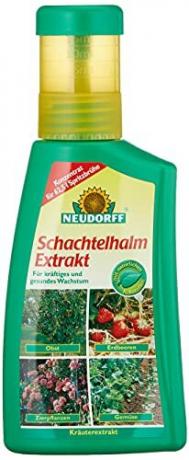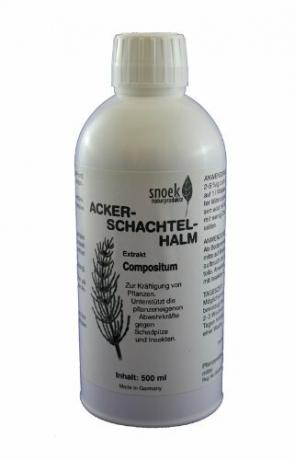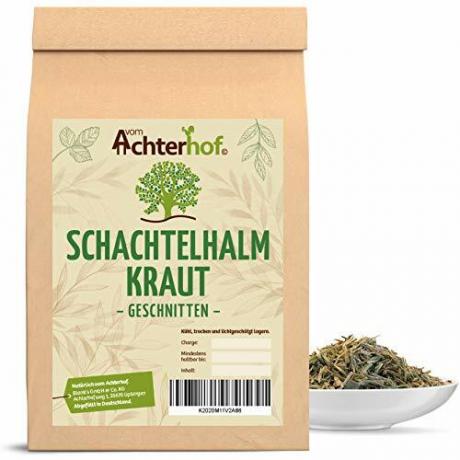Horsetail tea strengthens the plants naturally. We show advantages, application of the popular broth and how to prepare it correctly.

A true all-rounder is the field horsetail (Equisetum arvense). The horsetail plant is not only used as a plant-strengthening agent. For quite some time, the herb has also offered great benefits in natural medicine, cosmetics, and even in the home. The colloquial name horsetail comes from the fact that tin household appliances used to be cleaned with horsetail. This works so well because of the embedded silica crystals. It is precisely this silicic acid that is responsible for the plant-strengthening effect. There are many descriptions of names such as extract, tea, manure or cold water withdrawal circulating on the Internet. In almost all cases, however, a broth is made from the field horsetail.
Benefits & mode of action of horsetail broth
The field horsetail is one of the plants with the highest silica content. Silicic acid strengthens the tissue of the plants, making it particularly difficult for fungi to attack the strengthened plants. This is because the fungi usually infect a plant with a fungal spore. This forms an organ similar to a plant root. This means that the spore has to penetrate the leaf tissue in order to be able to feed on the plant. If that doesn't work because the plant tissue is too stubborn, the fungal spores literally starve. But not only for mushrooms (such as mildew) makes life more difficult. Also sucking insects like aphids prefer weak plants, because there the cell wall of the leaves and stems can be pierced much more easily.
Because the horsetail broth does not act directly on the pest, it is very important to use the plant broth preventively. Only then does the field horsetail unfold its effect. The preparation is therefore not suitable as a plant protection product for the direct control of an existing fungal infestation. In addition, the field horsetail broth must be poured or sprayed regularly, otherwise the silicic acid content in the leaves will fall again. Every 14 days is a good rhythm for horsetail broth administration.
Tip: A field horsetail broth is completely harmless and therefore particularly suitable for vegetables such as tomatoes, cucumbers, zucchini and other plants susceptible to fungus such as roses.
The following products have proven themselves in our garden:
- Field horsetail extract: Plant additives for strong and healthy growth.
- field horsetail: Gently dried, natural horsetail for the production of broths and liquid manure.
- 36%

Neudorff 265 horsetail extract, 250 ml
13,49€8,50€
Details →

Snoek horsetail extract
7,95€
Details →

1,000 g horsetail field horsetail horsetail tea horsetail...
Details →
Production: prepare horsetail liquid manure
If you want to cultivate your own horsetail for an extract, then watch out: The Even in agriculture, horsetail is one of the most feared weeds and hardly ever fightable. You should therefore be glad if the deep-rooted plant is not growing in your garden. A culture in a pot, on the other hand, is unproblematic with the undemanding herb. If you need field horsetail quickly, you can easily buy dried herb on the Internet. Even ready-made preparations are available. The production of a broth is much more time-saving than a liquid manure. For a start, simply put the fresh or dried field horsetail in a container with water and soak it for 24 hours.
Mixing ratio: 1 kg fresh field horsetail or 150 g dried field horsetail to 10 liters of water.
After the above procedure, the brew has to simmer for another 30 minutes before it is finally ready. Then the brew just has to cool down. For a watering application, coarse sieving of the horsetail stalks is sufficient. If you want to apply the broth with a syringe, we recommend a coffee filter. Otherwise, fine suspended matter can quickly clog the nozzle of the sprayer.
Finished field horsetail broth: For use, one part broth should be diluted with 5 parts water (1:5).
Homemade natural fertilizers have many benefits. If you are interested in how to do various other types of make your own fertilizer can, read this article.



